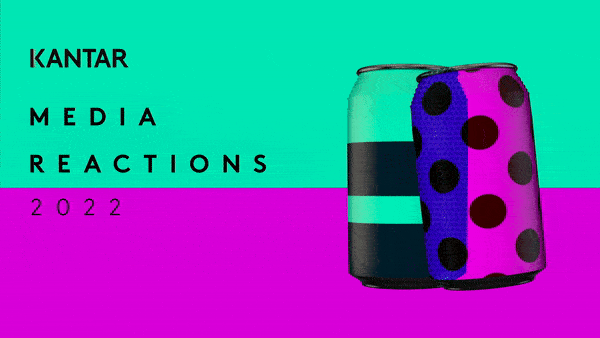
Top stories



Marketing & MediaHistoric advertiser interest as NBCUniversal sells out Milan Cortina 2026 Olympics slots
1 hour



More news












HR & Management
Kickstart your career: 7 steps to get job-ready in 2026






Insights from Media Reactions 2022, the third edition of Kantar’s global Ad Equity ranking of media channels and media brands identified:
Kantar’s Ad Equity metric uniquely identifies the places where consumers most appreciate advertising and are least likely to view ads negatively. Across all media channels consumers are most positive about advertising in sponsored events (#1), in magazines (#2) and cinema (#3). Ad equity for almost all online channels increased this year, continuing the trend since 2021.
Within the digital environment, influencer content leads the way as the preferred ad format, with a six point jump in ad equity, followed by ecommerce and podcast ads. Social media story ads and music streaming ads both improved one position in comparison to last year’s results.
| Consumer Global ad equity ranking – all media channels | Consumer Global ad equity ranking – online media channels |
| 1) Sponsored events (+1) | 1) Influencer content (+1) |
| 2) Magazine ads (+1) | 2) Ecommerce ads (+1) |
| 3) Cinema ads (-2) | 3) Podcast ads (-2) |
| 4) Point of sale ads (-) | 4) Social media story ads (+1) |
| 5) Digital out of home ads (+2) | 5) Music streaming ads (+1) |
Amazon leads the overall Ad Equity ranking among the nine digital media brands measured globally in 2022. People find ads on Amazon relevant, useful and of better quality, making it the most popular ad platform among consumers this year. Amazon advertising is also the most preferred brand locally in four markets: Germany, Italy, Egypt and Colombia, and in the top five in four other markets.
TikTok, the #2 digital brand for Ad Equity, continues to be perceived as innovative and more fun and entertaining than other digital media brands. Spotify jumped four places to reach #3, representing the constantly growing music streaming channels and podcast. Spotify’s strength mainly comes from the perception of quality ads and consumers’ willingness to accept the advertising in the platform. It is placed at #1 in Vietnam, and in the top 3 in Japan and Korea.
Marketers ranked Instagram, for the second year in a row, as their number one preferred media brand, followed by Google (#2) and YouTube (#3). This year, TikTok has moved three spots in preferences among marketers, to reach fourth position. 84% of marketers plan to spend more on TikTok in 2023; more than any other global ad platform.
In contrast to last year’s results, consumers’ preferences have divided equally between global and local media platforms. Across 29 surveyed markets, global giants such as Amazon, Google, Twitch, Spotify, Pinterest and Disney were identified in 15 countries as the preferred platforms. Fourteen of the top advertising performers – from a consumer perspective - around the world are local or localised media brands.
Digital media spend is expected to continue increasing in 2023. Online video, video streaming and social media stories are the top 3 channels with a net increase in budget allocation in 2022 and 2023, followed by marketing in the metaverse, which marketers say they will increase by 61% in 2023.
Commenting on the findings Jane Ostler, EVP, Creative and Media solutions at Kantar, added: “The media environment continues to evolve rapidly and, in inflationary times, marketers need to make careful choices. Marketers continue to be lured by the siren call of the new and shiny, such as embracing attention as a new metric and the metaverse as a new channel – but it is imperative to maintain a holistic understanding of ad platforms and what consumers think of them.”
Clarifying the local South African findings Chris Nortje, Media Lead at Kantar, concluded: “The ability for new market players to enter a market and immediately garner great ad equity showcases that marketers need to always be on the lookout for new media partners and cannot become locked into historic best practices. This holds especially true with global powerhouses such as Disney and Amazon when they come to market as whilst they may not yet have the reach, they certainly do hold consumers’ attention.”
Want more? Catch the highlights package in our free webinar and download the full report at kantar.com/mediareactions. Chat to Chris Nortje about our workshop that delves into the SA findings for Media Reactions 2022.
t. 010 036 0600
Media Reactions is an annual study that explores the evolving media landscape to help advertisers, media agencies and media owners navigate media decisions. In 2022 it shares insights from around 18,000 consumers and 1,000 senior marketers in 29 markets (Argentina, Australia, Brazil, China, Colombia, Czechia, Egypt, France, Germany, Greece, India, Indonesia, Italy, Japan, Korea, KSA, Mexico, Netherlands, New Zealand, Philippines, Poland, Romania, Slovakia, South Africa, Spain, Taiwan, UK, USA, and Vietnam). It provides a long-term perspective on what people expect from advertising environments, particularly content-led and social media.